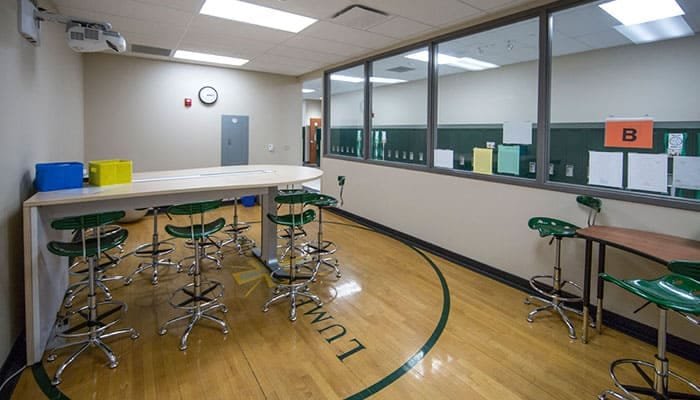Demand for Catholic education is increasing rapidly as parishes consolidate their school systems. Traditionally, each Catholic church would run their own school. Now, as the trend turns to shared school systems that serve multiple parishes, the school buildings need to expand for the growth.
Expanding for growth can mean either renovating and adding on to existing school buildings, or creating a whole new school building. Either way, the challenges remain the same. The school building has to serve more than one purpose. In many instances, while the building is used for traditional school activities during the day, on many evenings and weekends the classrooms can be used for religious education for public school students. In addition, the commons and cafeteria space can double as a fellowship hall. These buildings also need to have access to a church or chapel. The design also has to account for other events that may happen during school hours, such as funerals. During lunch hours, mourners and students both need to use the building, so keeping the school secure while allowing visitors to enter and exit is very important.
In addition to the design of the building, the process for designing these multi-purpose Catholic education buildings is different than designing public school buildings. While public school design must involve Superintendents, school board members, and administrators, private school design involves mostly volunteers.
While Catholic school design can have challenges, the benefits are tenfold. These buildings help instill the values of the Catholic church and allow students to grow in their faith and education.
